Development of optical communication technology
On the basis of reviewing the history of the development of optical fiber communication, it focuses on the achievements of device technology, the development of network protocols and the progress of multiplexing technology; it introduces the development overview of WDM all-optical network, the key technologies involved in the future optical network and the urgent need Solve technical problems. Finally, the technical and market prospects for the development of optical communications in the next 10 years are pointed out, and the WDM all-optical network will be the focus of the development of optical communications in the next 10 years.
Keywords: optical fiber; wavelength division multiplexing; optical time division multiplexing (OTDM); optical code division multiple access (OCDMA); all-optical network
1 Year-by-year progress of optical communication technology
The main symbol of the 30-year achievement of optical communication technology is the year-on-year increase in transmission capacity; technological progress is mainly manifested in optical devices, multiplexing methods and novel optical network protocols.
Optical fiber is the basic medium for optical transmission. In the course of decades of development, optical fiber communication systems have experienced three generations: (1) 0.85μm multimode optical fiber optical communication system; (2) 1.3μm multimode optical fiber optical communication system and single mode optical fiber Communication system; (3) Single-mode optical fiber optical communication system with working wavelength of 1.55μm. The dispersion-shifted fiber (DSF, G.653) is an important achievement in the third-generation optical fiber communication system. The zero dispersion point of the common single-mode fiber is near 1.31μm, and the dispersion-shifted fiber moves the zero dispersion point from 1.31μm to 1.55μm, effectively solving the dispersion problem of the 1.55μm optical communication system.
Light sources used in fiber optic communication systems have undergone advancements from light emitting diodes to semiconductor lasers. At present, semiconductor lasers can not only work at room temperature, but their direct modulation rate can reach 10Gbit / s or even higher, which gradually meets the requirements of high efficiency, high rate, low chirp, high power, and long life. The year-on-year progress of optical fiber and light source has solved the problem of attenuation and dispersion, and the result is increased communication capacity of the optical fiber system.
The optical fiber amplifier invented in the 1980s is a revolution in optical fiber communication. It saves the relay process of photoelectric conversion, and realizes the optical signal amplification of wavelength transparent, rate transparent and transparent modulation mode, thus giving birth to the commercialization of a new generation of optical fiber system using wavelength division multiplexing (WDM) technology.
The invention of optical fiber amplifiers and the adoption of wavelength division multiplexing technology have forced people to face the nonlinear effects of optical fibers. So scientists and engineers have launched non-zero dispersion-shifted fiber (NZ-DSF, G.655). The main types of non-zero dispersion-shifted fibers include large effective area fibers, low dispersion slope fibers, and anomalous dispersion fibers. The large effective area fiber greatly increases the mode field diameter of the fiber. The effective area of ​​the fiber increases from 55μm2 to 72μm2. At the same input power, the nonlinear effect of the fiber is reduced; the advantage of low dispersion slope fiber is that the dispersion slope is small, It is only 0.045ps / (nm2km), which is much lower than the ordinary dispersion slope, so a dispersion compensation module can be used to compensate the dispersion in the entire frequency band. In order to apply the optical fiber system using wavelength division multiplexing technology working at 1.55 μm to the optical cable of the second-generation optical fiber system (the operating wavelength is 1.3 μm) that has been laid, dispersion compensation fiber also came into being. Through the effective combination of dispersion compensation fiber and ordinary fiber, dispersion management transmission can be realized on the transmission link, which significantly increases the system capacity and transmission distance. The newly-launched so-called All-wave fiber eliminates the loss peak caused by the absorption of OH root ions in the conventional fiber around 1385nm, making the loss of the fiber from 1310 to 1600nm flat. Figure 1 can roughly illustrate the development of fiber optic technology.
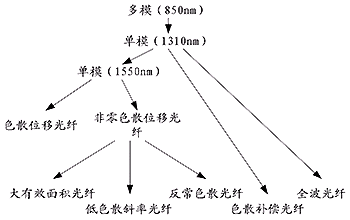
Figure 1 The development of optical fiber
While fiber amplifiers are widely used in the new generation of wavelength division multiplexing systems, the research and development of fiber amplifiers are constantly improving. In the past five years, various types of optical amplifiers (EDFA, GS-EDFA, TDFA, GS-TDFA, and RFA) that have been technically mature have covered the wavelength range of 1365-1650 nm, making wavelength division multiplexing within the above range become may. Figure 2 shows the wavelength coverage of these technologies. Among them, the Raman amplifier (RA) uses the Raman scattering effect in the optical fiber to realize the amplification of the optical signal. Due to the high threshold of stimulated Raman scattering effect, this optical amplification technology is only really possible to be practical after the successful development of high-power semiconductor lasers in recent years.
EDFA: erbium-doped fiber amplifier; GS-EDFA: gain-shifted erbium-doped fiber amplifier
TDFA: Thulium-doped fiber amplifier; GS-TDFA: Gain-shift Thulium-doped fiber amplifier; RFA: Raman amplifier
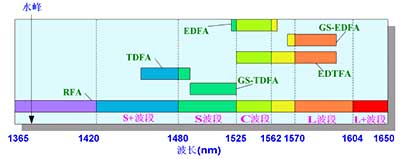
Figure 2 Optical amplifier gain range
Thinking about the problem with the technical viewpoint of wavelength division multiplexing, we have a new understanding of the optical communication window. We call the wavelength range of 1570-1604 nm as the L band, and the wavelength range shorter than 1525 nm as the S band. This band can be extended to 1365nm because of the successful development of full-wave fiber. These two bands can be called the fourth window and the fifth window of optical communication, as shown in Figure 3.

Figure 3 Optical fiber communication window
2 All-optical network
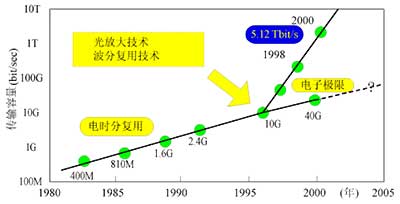
Figure 4 Development of optical fiber communication system
In the 20 years since 1980, with the development of optical devices and the evolution of optical systems, the capacity of optical transmission systems has grown from Mbit / s to Tbit / s, increasing by nearly 100,000 times (see Figure 4). From Figure 4 we can clearly see that the use of WDM system has changed the growth of the optical transmission system capacity, breaking through the "electronic bottleneck" or the limit of electronic limits. Although Fig. 4 does not involve multiplexing technologies such as optical space division multiplexing, optical time division multiplexing, and optical code division multiplexing, the above multiplexing technologies extend optical communication from the perspective of space domain, time domain, and codeword domain, respectively. The capacity of the system enriches the way of optical signal exchange and control, and opens up a new chapter of all-optical amplification and all-optical network.
In theory, an all-optical network means that the transmission and exchange of optical information streams in the network is always implemented in the form of light, without the need for optical / electrical, electrical / optical conversion. In other words, the transmission of information from the source node to the destination node is always in the optical domain.
In terms of optical network protocol standards, Synchronous Digital Sequence (SDH), Asynchronous Transfer Mode (ATM), Transmission Control Protocol / Internet Protocol (TCP / IP), and the recently identified Multi-Label Protocol Exchange (MPLS) have all been in the past decade The milestone technical achievements are the main basis for people to build all-optical networks.
After the wavelength division multiplexing technology was proposed, the wavelength itself became a resource for networking (additional insertion, switching, routing). With the gradual maturity of optical add-drop multiplexing (OADM) and optical cross-connect (OXC) technologies, the optical layer, which was originally thought to only provide bandwidth transmission, has started to have networking capabilities, and thus has become a hot spot in optical communication research and development in recent years. Once the networking is successful, optical communication technology will not only provide huge bandwidth, but also derive a series of networking resources that can optimize the use of these bandwidths. Such networking resources are currently focused on wavelengths, and will be refined into optical time slots or optical packets in the future.
WDM all-optical network is based on WDM technology, using wavelength as the networking resource, flexible and reliable, and stable optical network. It can be divided into three levels: long-distance backbone network, regional network and metropolitan area network. Local data services are connected to the WDM all-optical network through service interfaces provided by local nodes, such as Ethernet interfaces, SDH interfaces, and ATM interfaces. The WDM all-optical network implements routing through the wavelength routing mechanism, and has good scalability, reconfigurability, and operability.
Of course, from a specific technical point of view, WDM all-optical network still has many problems to be solved. First of all, there is no optical logic device, which makes many conclusions and application schemes of the electrical layer have to add many restrictions to the optical layer; second, the optical integration technology can be said to have just started, it is difficult to predict its development speed And the influence on the construction of optical networks; third, the stability and cost of optical node technology itself is still a problem that is difficult to know; fourth, technical competition and market competition are complex matters, and the enhancement of network functions is generally based on At the cost of increased complexity and cost, it is not easy to obtain a good price-performance ratio; finally, there are many conflicts between the two, compatibility with existing networks, full use of the optical fiber resources already laid, and the development of new network construction ideas. . With the resolution of these problems, the all-optical network in the future will enter the era of Tbit / s capacity networks, and at the same time provide users with multi-service (including IP service) access with transparent speed and reliable performance.
According to statistics, the IP service doubles every year, while the voice service grows 7% every year; in 2000, the IP service in North America exceeded the voice service. The development of IP services has forced profound changes in traditional telecom networks that focus on voice services. Broadband technologies such as ATM, Gigabit Ethernet, and MPLS have gradually become the core technologies of backbone networks. The application and development of these core technologies require the support of optical communication technologies. The optical fiber communication system provides higher-speed and higher-reliability link transmission for the broadband network, and the networking capability provided by the optical network further improves the flexibility and scalability of the existing network and protocols.
With the improvement of information processing capability in the optical domain, optical network technology has broken through the limitations of the physical layer and gradually entered the data link layer and network layer. The way in which the optical fiber communication system carries the IP protocol is also realizing the transition from IP-ATM-SDH-optical network, IP-SDH-optical network to IP-MPLS-optical network (see Figure 5). Optical networks provide users with functions such as cross-connection, switching, and routing, which significantly alleviate the pressure of traditional electrical switching networks and provide a broad space for the future development of Internet services.

Figure 5 Optical network carrying IP
The research and discussion of optical network protocols and standards have just started. The International Organization for Standardization Internet Engineering Task Force (IETF), InternaTIonal TelecommunicaTIons Union (ITU) and OpTIcal Internetworking Forum (OIF) are conducting G-MPLS, G.709, O- UNI 1.0 related optical network standard formulation work. At present, the discussion about optical networks is very active, and the debate is also very fierce, but more and more people realize that the basic position of optical networks in the entire telecommunications network will not be shaken. Therefore, it is of great strategic significance to fully study the optical network and optical fiber communication unit technology for the development of the entire communication network.
Optical time division multiplexing (OTDM) technology and optical code division multiple access (OCDMA) technology are also candidates for future all-optical networks. OTDM and OCDMA conceptually correspond to TDM and wireless CDMA in traditional communication networks, respectively. OTDM technology can increase the amount of information carried by a fixed-wavelength light wave by dozens or dozens of times, and OCDMA provides an all-optical access method. Due to the emergence of OTDM and OCDMA technologies, people's understanding of this information carrier will be further deepened, and the optical signal pattern in the transmission line will gradually change from non-return to zero code, and the modulation method of the transmission system has also changed from traditional The internal modulation gradually developed into an external modulation. Looking forward to the future of all-optical networks, OTDM and OCDMA technologies will enrich the future WDM all-optical network access methods and service types, while providing multiple granularity access and multiple service qualities; WDM technology-led, combining OTDM and OCDMA Technology will become the main framework of the all-optical network in the future.
3 Key technologies of optical network
Let us use Table 1 to understand the key technologies for forming an optical network.

In addition to the many unit technologies mentioned above, the key technologies of the optical network must also include how to establish a complete all-optical network management system, which will involve the research of optical network protocols, such as the formulation of standards such as wavelength routing protocols and optical packet formats. For example, the Generalized MulTIple Protocol Label Switching (GMPLS) developed by the IETF is based on the traditional MPLS, and further expands the concept of labeling, introducing channel identifiers such as optical wavelengths and time slot labels as labels to achieve routing, switching and Management control. These protocols and standards will ensure compatibility and flexibility between the various unit technologies.
4 10-year outlook
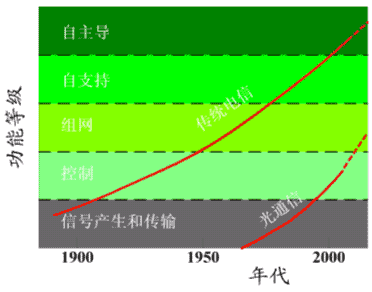
Figure 6 Network functions implemented by optical communications and traditional telecommunications
In the 130 years of development of the traditional electrical communication network, we have completed four functional levels of electrical signal generation and transmission, signal control, networking and self-support, and have realized electronic computer networks and electronic communication networks. The development of optical communication, which is only 30 years old, will also undergo the same process. At present, we have fully mastered the generation and transmission of optical signals, and are now mastering the technical aspect of optical signal control. The next goal is to form an all-optical network.
We believe that the development speed of optical communication technology will surpass that of electrical technology. It is expected to realize optical networking in another 10 years. In the next 10 years, the WDM optical network will become a technology and communication hotspot for the development of the communications industry. Although the realization of optical network self-supporting technologies, such as optical switches, optical logic processing and optical computing, is immature and it will take some time to enter the self-supporting stage, the realization of optical network self-supporting and self-leading will eventually be the direction of future optical network development .
Looking forward to the next 10 years, WDM technology will still be in a dominant position, and the combination of WDM, OTDM, and OCDM technologies will form the basic framework for future optical networks. Due to the development of the 4th and 5th windows of optical communications, the number of channels in the WDM optical network will be further increased, and it will be able to provide 1000 wavelengths in the entire communications window. Optical switches and optical routers will become the first choice for building core WDM optical networks, and their switching capacity will exceed the order of Tbit / s. The types of services carried by WDM optical networks will diversify and provide more broadband services, such as video on demand.
WDM: wavelength division multiplexing; OTDM: optical time division multiplexing; OCDMA: optical code division multiple access; GMPLS: general multi-protocol label switching;
OADM: optical add-drop multiplexer; OXC: optical cross-connect; ISDN: integrated services digital network; ATM-PON: ATM passive optical network
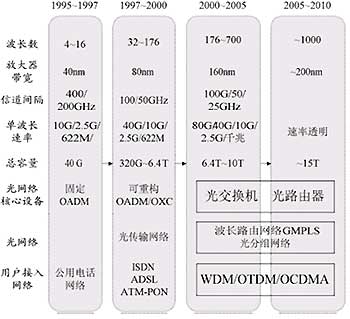
Figure 7 Forecast of optical communication development in the next 10 years
The user access network will also enter the era of fiberization, and the coexistence of multiple access methods will still be the characteristics of the access solution in the next 10 years. However, the content of optical fiber technology in various access technologies will continue to increase. The coverage of the optical network will be extended from the core to the metropolitan area network and access network. When the All Optical Network quietly enters the building area, street, and residence, and successfully completes the extension to the local and users, the future family will also enter an era of multimedia imagination.
5 Conclusion
In the development of an industry, technology is the driving force, and the market is the traction. Optical communication technology has undergone 30 years of development, and technological advancements have made the development of all-optical networks possible. The explosive growth of IP-based data services is the market demand for the development of all-optical networks. The development speed of the optical communication industry and the progress of new technologies in the next 10 years are essentially determined by the market demand for communications.
Technical progress is certainly innovation, and the introduction of new services is also an invention. For telecom network operators, a variety of business types, as well as price advantages, high flexibility, and service quality are the keys to expanding the optical network market.
With the gradual expansion of the all-optical network, the management and control of the network become more and more important. Through network management software, users can operate and control the entire network, and realize network configuration management, security management, alarm management, billing management, and performance management. Therefore, software technology plays an important role in the development of all-optical networks.
The development of all-optical networks will actually strongly depend on the status quo of the network. As described in "Path Dependence" in Economics, "In a knowledge-intensive industry with increasing returns, a technology and product will become mainstream for some historically established reasons, although it may not be the most effective technology." The path that the optical network evolves depends largely on the current network conditions. At present, WDM technology is the most widely used among many technologies, and the research of optical network based on WDM is also the most in-depth. Therefore, WDM technology will have a solid position in the development of all-optical networks in the next few years.
Finally, and perhaps most importantly, we must consider the impact of regulations on the evolution of all-optical networks. The formulation of standards and communication specifications can often affect and change the development process and evolution direction of communication networks. Therefore, the relevant government departments and international and domestic standardization organizations have a heavy responsibility.
Protective Gloves,Medical Latex Glove,Disposable Latex Glove,Disposable Safty Gloves
Ningbo Anbo United Electric Appliance Co.,ltd , https://www.airfryerfactory.com